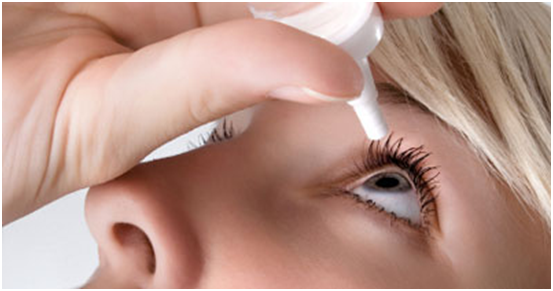Occupational Allergy



An occupational allergy is an allergic reaction to a substance present in the workplace. Occupational allergies are often contact or inhalation allergies. The symptoms of an occupational allergy are extremely diverse and depend on the type of allergen.
Exposure to organic dusts, chemicals, or animals at work can cause the development of all sorts of allergic responses. The clinical history usually provides the first clue by the association of symptoms with work, and recovery with absence from work, but it is seldom so clear-cut because prolonged reactions are common, and daily exposure adds up towards the end of the week.
It is very important to make the diagnosis of occupational allergies as early as possible because if there is a long delay before diagnosis the asthma may not improve on removal from exposure, and persist indefinitely.
Allergy to dust mite or animals as well as to the occupational possibility can co-exist and confuse the situation, so expert advice from your Allergist, on sorting this out may be necessary.
Allergy to Insects
Insects are very liable to cause allergies, particularly many species of mites, cockroach in warm climates, ants, and so on.
Locusts are sometimes used for research and the scientists working with them can become so allergic to them that they have to find another field of research, as this patient had to do…
Pricking through saliva, blood, and faeces of the insect he brought to the consultation produced the striking skin reactions shown below so he had to find another job,
Laboratory workers who work with animals are liable to become allergic to rats, mice, guineapigs, etc. They are at particular risk because the main allergen in rats, and probably other animals, is in the male urine, which dries up and becomes airborne.

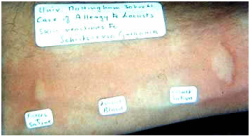
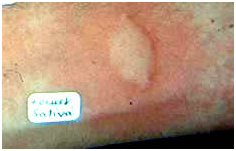


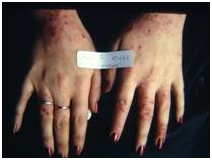


Persulphate Allergy
Hairdressers handle many potentially nasty chemicals in the course of their work, particularly when doing permanent waving, in which persulphates are used. Hairdressing is not an occupation for the allergic person. Skin sensitisation is common, and the future in this occupation may be compromised. At right are pictures of the hands of one such patient.
Latex Allergy
Healthcare Personnel are increasingly at risk of sensitisation to latex, as a consequence of greatly increased use of rubber gloves in recent years. This also applies particularly to children who have been subjected to many operations, such as for spina bifida.
The development of rubber-free vinyl gloves has helped a great deal, but latex allergy can be very intense, causing all sorts of allergies including anaphylaxis, and can sometimes be triggered by many fruits with similar allergen molecules.

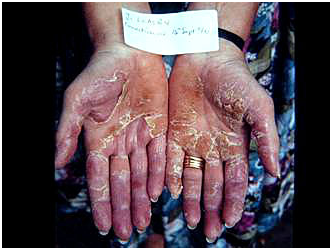

Glutaraldehyde Allergy
The development of flexible endoscopes has also entailed the introduction of sterilisation using Glutaraldehyde, which does not damage these very expensive instruments. Unless great care is taken this sterilising agent can sensitise susceptible people, just as latex has done.



Nickel Eczema
Allergy to Nickel is very common, and can be diagnosed easily because contact with the buttons on jeans or clips on bras which are nickel plated produce a rash where they touch the skin.
Allergy to wood dusts
Certain woods will cause allergic asthma. The most researched is western red cedar which has caused much asthma in the lumber mills in Canada and has been intensively researched. Resin in pine wood may cause asthma in those who are allergic to pine resin, (colophony).
Various tropical woods can cause problems if the dust is inhaled, and it is always sensible to wear a mask if there is a lot of wood dust. Willow dust has been reported to cause asthma in aspirin sensitive workers because the wood contains salycylates!
Workshops today are very conscious of the risks of wood dust and it is mandatory to have effective dust control systems. Before these precautions were put in place woodworkers were liable to cancer of the nose, the first part of the respiratory system that dust contacts.
In woodworking factories plywood, and various materials composed of sawdust and formaldehyde resin glues are also a risk factor for asthma. Colophony, or pine resin, has caused much occupational asthma when used in cored solder in electronics factories, and exceptionally in violinists who use it on their bows to make them slightly sticky.






